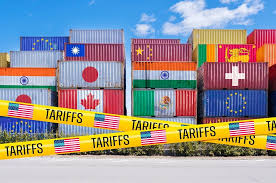US tariffs to reach 15% by 2025, global growth faces strain: Nomura

US TARIFFS TO REACH 15% BY 2025, GLOBAL GROWTH FACES STRAIN: NOMURA
The average US tariffs levels will be around 15 per cent by end of 2025, marking the highest level since before World War II. While this may trigger stagflation in the US—weak growth alongside rising inflation—it will deliver a negative demand shock globally, characterised by subdued growth and falling inflation, according to economists at Nomura.
It expects many central banks to ease rates, even as the Federal Reserve holds firm until December 2025. Policy uncertainty in the US, now surpassing pandemic-era levels, may dampen global business investment and hiring. Analysts are debating whether US economic exceptionalism is fading, Nomura said in its report titled ‘Global Economic Outlook: Uncharted Territory.’
A ‘soft scenario’ could see the US return to economic normalcy with a weaker dollar, while a ‘hard scenario’ could lead to a structural retreat from US dollar assets.
Tariffs are emerging as the most influential macroeconomic force in the US. Nomura anticipates companies will pass on import costs to consumers, potentially reigniting inflation, especially with core PCE already above the Fed’s 2 per cent target. Despite the inflationary outlook, it does not foresee a US recession this year.
In China, export frontloading has temporarily boosted Q1 growth, but momentum is expected to fade in H2 2025 amid rising trade tensions and a worsening property market. With new home sales down 18 per cent YoY and continued price declines, Nomura expects China’s government to intensify efforts to tackle non-performing loans.
Europe, while not immune, could eventually benefit. Germany has announced increased defence and infrastructure spending, and the EU’s €150 billion (~$172.5 billion) SAFE fund is poised to support growth. Nomura believes the ECB and Bank of England will cut rates more aggressively than markets anticipate, especially as eurozone inflation falls below target.
In Japan, inflation is largely driven by food and energy imports. While headline inflation may remain above 2 per cent through mid-2025, food price relief and a stronger yen could pull core CPI below target by Q4. The Bank of Japan may face communication hurdles in aligning market expectations with underlying inflation trends. A rate hike is likely in January 2026.
Across Asia, weaker exports and rising Chinese imports will pressure regional growth. However, India stands out. Its success in attracting US-led supply chain investments and its proactive trade negotiations position it as a key beneficiary of global diversification away from China, added the report.
By Fibre2Fashion
